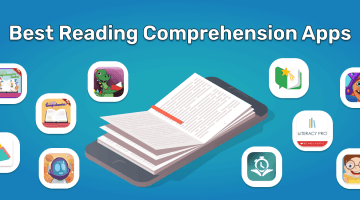How to Teach Multiplication: 16 Best Ways
reviewed by Jo-ann Caballes
Updated on September 19, 2025
Once your child has mastered addition and subtraction, it’s time to move to the next step — multiplication. If you’re struggling with explaining multiplication to your little ones, I’m here to share the 16 best ways to teach multiplication that are efficient, easy, and fun.
How to start teaching multiplication?
The best way to start teaching multiplication to ensure students understand addition and skip counting, number patterns, grouping, and repeated addition. Once they’re all set with the introduction to multiplication and math basics, multiplication shouldn’t be a serious challenge. However, here’s the truth: your approach and methodology matter a lot.
Here are 16 easy ways to teach multiplication that have been proven helpful.
How to teach multiplication creatively?
- Incorporate interactive 1-on-1 math lessons
- Practice with multiplication worksheets
- Practice with a Brighterly Knowledge base
- Play fun and engaging math games
- Use visual multiplication models
- Practice with multiplication mix-ups
- Try dot multiplication activities
- Use fun and engaging math books
- Break the times table into smaller chunks
If a fun way to teach multiplication isn’t exactly for you or your kids, I will also provide you with several traditional methods of how to introduce multiplication. You can use several methods simultaneously or choose the one that suits your learning style the best.
How to teach multiplication? Traditional ways
- Teach multiplication as repeated addition
- Start with multiples of zero
- Explain multiplying by one
- Introduce multiplication tables gradually
- Teach commutative properties
- Give your child/student a simple calculator
- Practice reciting the multiplication table
Keep on reading to discover a more in-depth overview of each method and choose the one of your liking.
More about all the easy ways to teach multiplication
There are plenty of simple and engaging methods to learn how to multiply, and we will go over every single one. Let’s start with some fun ways of how to teach basic multiplication.
Incorporate interactive 1-on-1 math lessons
The best and easiest way to learn multiplication is through 1:1 math lessons that use personalized learning and tailor lessons to focus on areas your child needs the most help with. Moreover, platforms like these use props, AI, and visual aids to cater to different learning styles and boost children’s learning to the max. One of these platforms is the Brighterly math tutoring platform.
Brighterly math program is Common Core-aligned and blends interactive, game-based learning with a structured STEM-focused approach. Brighterly reviews have a 4.6-star rating on Trustpilot, making it one of the leading math tutoring services.

Brighterly math tutors specialize in individual, interactive online math sessions with an emphasis on a personalized program for every student. On top of that, every Brighterly tutor holds a Bachelor’s or Master’s degree in math and has 5 to 15 years of experience in math tutoring under their belts.
How to teach kids multiplication with Brighterly?
The core principle of the Brighterly multiplication learning technique is to make the process as engaging as possible while showing how multiplication translates into real-world scenarios.
Unlike the public school environment, Brighterly offers a comprehensive approach to teaching multiplication to 2nd and 3rd graders — by giving children clear, interactive tasks, extra practice, and constant support, guaranteeing the best results in the subject.
For example, if a child struggles with understanding multiplication as repeated addition, Brighterly Math tutors utilize visual aids, like arrays and number lines, to reinforce the concept. Brighterly students are taught according to their learning styles, making the overall learning process more effective for children.

Practice with multiplication worksheets
If your kids prefer individual work, teaching with multiplication worksheets is a wonderful way to hone multiplication skills. This method can help memorize multiplication facts, recognize patterns, and build confidence through repetition. However, it is important to use age-appropriate, engaging, and interactive worksheets that are not only effective for memorizing but can also invoke genuine interest in math subjects.
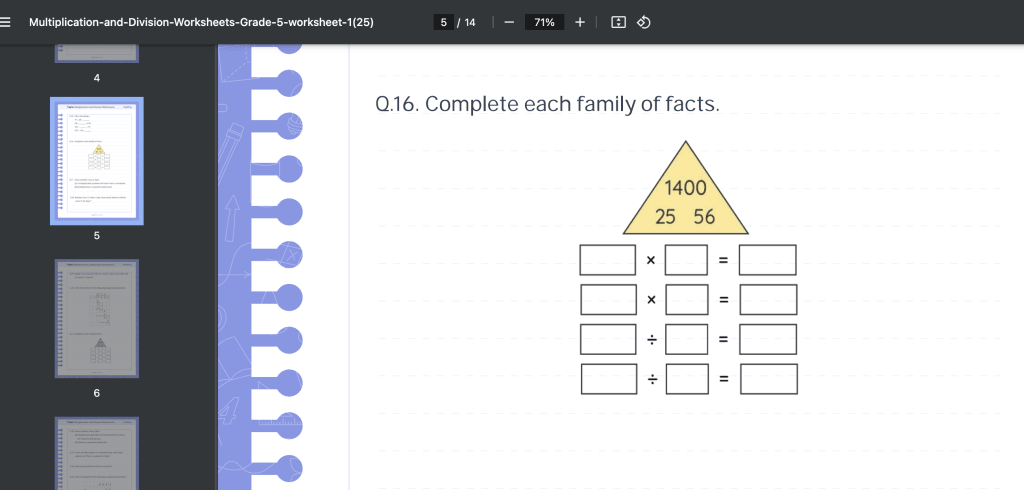
If you’re looking to introduce multiplication worksheets in PDF format, Brighterly provides free printable math worksheets and additional resources available at any time.
- Multiplication Worksheets Grade 2
- Multiplication Worksheets Grade 3
- 4th Grade Multiplication Worksheets
- Multiplication and Division Worksheets Grade 5
- 6th Grade Multiplication Worksheets
They are entirely free of charge and accessible to all, even if you don’t subscribe to Brighterly tutoring. The worksheets are great for self-learning, whether you want to teach multiplication or explain multiplication: exercises like fill-in-the-blanks, matching activities, and word problems can make learning more interactive and effective.
How to practice multiplication with Brighterly multiplication worksheets
To practice multiplication with Brighterly multiplication worksheets, go to the Brighterly math worksheets section and choose one of the hundreds available worksheets. To save you some precious time, I’ve listed a couple of multiplication worksheets that provide you with an easy way to teach kids multiplication: The whole multiplication section here.
These practice worksheets are perfectly suited for use by teachers or tutors, parents, or independent study at home.
How to teach basic multiplication and practice with Knowledge Base
Brighterly Knowledge Base provides articles on various math concepts covering any topic your child needs. This resource is ideal for self-learners who prefer exploring topics at their own pace and, of course, for parents who ask the Internet, ‘How do you explain multiplication to kids?’.
Brighterly Knowledge Base offers step-by-step explanations with visuals, including interactive quizzes and challenges along the way. This is a very easy way to teach multiplication — no need to spend hours looking for perfect resources.
How to practice multiplication with Brighterly Knowledge Base
To practice multiplication with Brighterly Knowledge Base and make it the easiest way to teach multiplication, you can use a detailed explanation of each multiplication topic:
Brighterly offers detailed explanations of each multiplication topic:
- Basic Multiplication: Learn multiplication as repeated addition with fun examples.
- Cross Multiplication: Understand how to solve equations quickly using cross-multiplication.
- Identity Property of Multiplication: Discover why multiplying by 1 doesn’t change a number.
- Long Multiplication: Master multi-digit multiplication step by step.
In addition, as the program is adaptive and customized to each student, you can take a test to assess how well your child understands multiplication and what could be the areas for improvement. With instant feedback like this, their chances of successfully mastering the skill double.
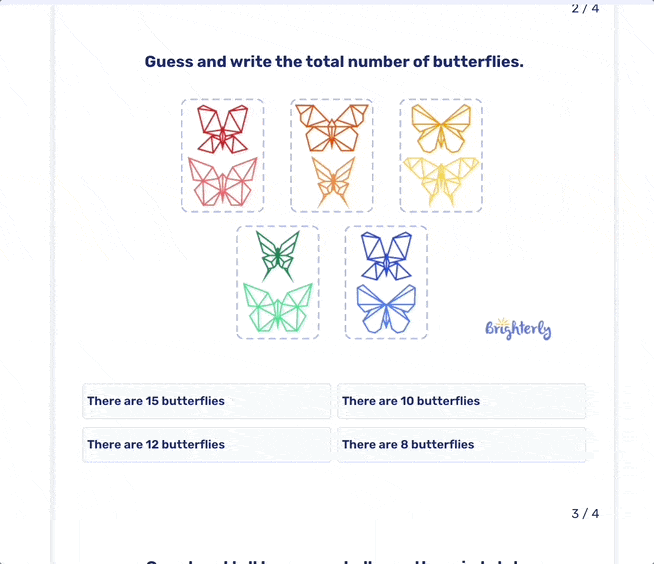
Best way for kids to learn multiplication: Play fun and engaging math games
A gamified approach to learning can boost your child’s material retention by up to 90%. No one can doubt the power of gamification in math learning, so it’s not strange that it is also the easiest way to teach multiplication. Remember that there are two best options to help your kid learn some concepts: make it fun and show how it can be related to real-life scenarios. Math games combine both!
Here are some engaging ideas your child will definitely adore:
- Multiplication board game: roll dice and learn multiplication tables.
- Online multiplication games: incorporate technology to foster kids’ skills and learn multiplication charts.
- Real-life scenarios: engage your kid in some real-life fun, like counting toy sets and pizza slices.
- Teaching multiplication in print: use a printable multiplication chart to ensure screen-free, yet effective practice.
How do you teach multiplication: Use visual multiplication models
Before moving to abstract calculations, use visual multiplication models — they help kids understand this concept in a tangible way.
Let me introduce you to some effective visuals for teaching multiplication strategies:
- Arrays
Set a number of objects in rows and columns to visualize an array and represent multiplication.
✅ Example: Draw three rows of 4 circles each to solve 3 x 4. This way, kids can see multiplication as repeated addition (4 + 4 + 4).
- Objects Grouping
Use everyday objects like cards, blocks, and kid-friendly products to create equal groups.
✅ Example: In order to solve 7 x 2, make seven groups with two objects in each. It fosters a hands-on understanding of multiplication.
- Number Lines
This is a fun one — a number line shows multiplication through jumps.
✅ Example: Let’s say you have to count 4 x 5; start at 0 and make four jumps of 5. This will help your child skip counting and understand multiplication patterns.
How to understand multiplication: Practice with multiplication mix-ups
Simple memorization doesn’t work with many students. This is where multiplication mix-ups come into play. Multiplication mix-ups require students to think critically about number relationships and recognize patterns, improving problem-solving skills.
Here’s what you can use when learning with multiplication mix-ups:
- Matching Games
Utilize flashcards or online games in which kids match multiplication problems with their correct answers. This is fun and helps them improve their speed while engaging in an interactive activity.
- True or False
This is a pretty straightforward teaching method where you have to show multiplication statements and ask your students where the statement is correct.
- Missing Digit Puzzle
Present children with problems with missing digits and have students determine what should be added.
✅ Example: ? x 5 = 25. The missing digit is 5.
How to explain multiplication: Try dot multiplication activities
Dot multiplication activities help students understand repeated addition and number patterns. Here’s how you do it:
Give the kid a piece of lined paper and a pencil. Instruct them to draw a specified number of dots, such as 12. Once they’ve completed this task, ask them to use a crayon or pencil to circle the dots in a way that illustrates multiplication facts. For example, with 12, they could circle two groups of six, six groups of two, three groups of four, etc.
Then, they should practice multiplication facts by writing the corresponding ones underneath their drawings.
How to teach multiplication to struggling students: Use fun and engaging math books
This one is especially effective, among other easy ways, in teaching multiplication. After all, what can be better than colorful, abundant books to captivate kids and spark their interest? Most publications use animals and other visually appealing objects to grasp their attention.
But you should choose those books carefully. Pick only those your kid would like to open outside their classroom.
These are some brilliant options personally I suggest looking into:
- The Best of Times: Math Strategies That Multiply by Greg Tang
- Math for Minecrafters: Adventures in Multiplication & Division by Amanda Brack
- One Grain of Rice: A Mathematical Folktale by Demi
Best way to teach multiplication to kids: Break the times table into smaller chunks
Remember how hard it was to memorize that multiplication table? Our children go through the same struggles nowadays also.
The only real advice here is to break it into smaller chunks. For example, you can first let them solve multiplication problems for numbers one to five. Alternatively, you can teach them simpler multiplications for numbers 1, 2, 5, and 10. Once they are well prepared, get down to the other numbers.

Easy way to explain multiplication as repeated addition
Kids typically find multiplication confusing because they don’t understand the patterns. But if they learn to view multiplication as repeated addition, things will go much smoother. Yes, this approach may fail when dealing with three-digit integers, but it works perfectly with smaller numbers and is also the easiest way to learn multiplication.
For example, to solve a problem like 4×2, kids can add 4 and 4 to get 8. If there is a two-digit number and a one-digit number, as 10×5, children may calculate 50 by adding four times ten. However, note that repetitive additions get more complex as the numbers increase.
Fastest way to learn multiplication: Start with multiples of zero
Zero is an intriguing and complicated concept in explaining multiplication. Look at this: your children may find 4+0 = 4 understandable, whereas 4×0 = 0 may confuse them.
An easy way to help kids understand the model of zero is through words and pictures. You may ask, “If I don’t give Brandon any pencils, how many will he have?” Clearly, “none” is the answer. That’s one way to begin teaching multiplication by zero.
Alternatively, you can show them your fist to build a real-world connection — when no fingers are out, you have none. As the saying goes, multiplication by zero always equals zero, none. This is also how to teach multiplication to special education students.
How to learn multiplication easy: Explain multiplying by one
When studying multiplication area, your kids know that anything multiplied should increase in value. However, things work differently when multiplying by one since anything multiplied by this number remains the same. After all, explaining multiplication to a child isn’t that difficult:
Ask them, “If I give Brian an orange once, how many oranges does he have?” One would be the correct answer. “But what if I give Brian eight oranges once?” How many will he have? The answer will be eight — the number won’t grow. This mental charade is the best way to teach kids multiplication by one.
How to teach multiplication to a child: Introduce multiplication tables gradually
Many parents and children fear multiplication tables, and for good reason. It’s hard to tackle the whole table with a couple of sittings. To simplify the learning, you may first start with tables 1 to 5.
Beginning with the most basic numbers may help youngsters learn this step more efficiently.
- First, ensure the kid has a hard copy of the multiplication table.
- Then, have them tackle the less complex sections using basic counting or repeated addition.
- Once they can deal with simple numbers, get down to more complex ones.
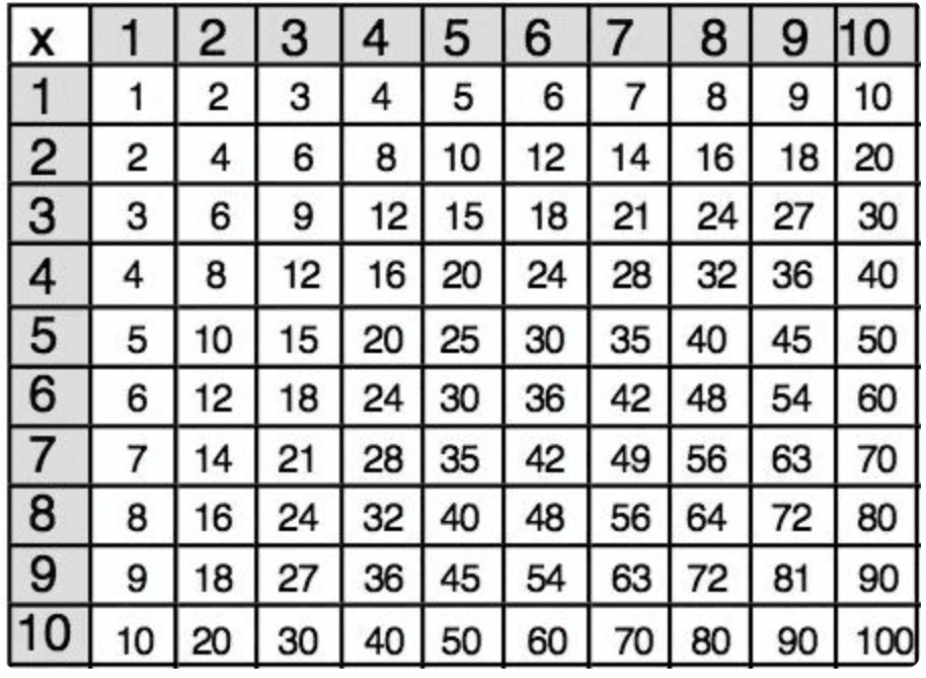
How to understand multiplication: Teach commutative properties
Commutative property means that the result remains the same even if one changes the order of numbers. For example, in a 2*4 equation, 2 may be put before 4 or 4 before 2. Anyway, both 2*4 and 4*2 will give the same result of 8.
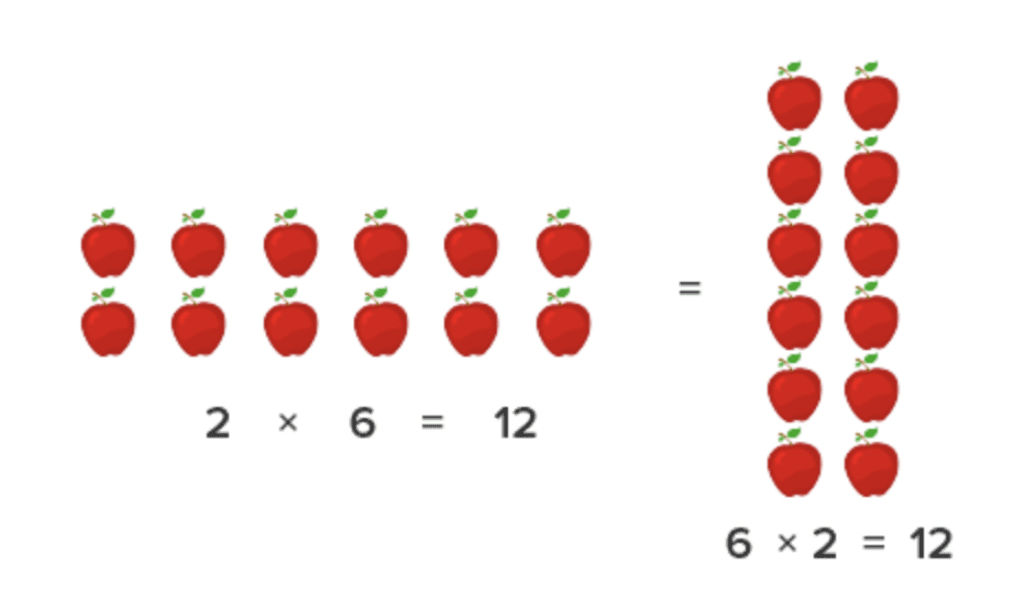
How to teach multiplication to struggling students: Give your child a simple calculator
I’m not suggesting using the calculator as a way to multiply. But you can use it to reinforce base multiplication skills.
For example, call out two factors, such as “3 and 7.” They should input the two factors into the calculator by pressing the multiplication (x) button in between. Then, give them about 30 seconds to think about the answer. After that, ask for their guesses. Once they respond, instruct them to press the equals button to check their answer.
If they handle multiplication tasks like this one, you kill two birds with one stone:
- the kid improves multiplication skills,
- and learns to handle a calculator.
Best way to teach multiplication to kids: Practice reciting the multiplication table
If your child prefers memorizing the table, it can be a great option, too. There’s nothing bad in allowing kids to learn by heart a couple of times. Instead, it’s a fool-proof method for teaching multiplication you should encourage.
First, ask them to remember the easier numbers, such as the 1s, 2s, 5s, 10s, and 11s. Then, continue with the more challenging ones. Little by little, your kid will memorize the table — even if you begin with a partial table like 2s.
Next, let’s discuss the specifications of teaching multiplication to different grades.
How to teach multiplication to grade 2
The best methods to teach multiplication to 2nd graders from the ones mentioned above are playing fun and engaging math games, starting with multiples of zero, and explaining multiplying by one. The trick to teaching 2nd graders is to incorporate gamified learning as much as you possibly can.
Note. Some schools introduce multiplication concepts earlier as part of foundational math, but it’s often informal or focused on understanding patterns.
How to teach multiplication to grade 3
The best methods of teaching multiplication to 3rd graders from the ones mentioned above are introducing multiplication tables gradually, practicing with multiplication worksheets, practicing reciting the multiplication table, and explaining multiplication as repeated addition. So if you’re wondering how to teach multiplication to 3rd graders, you’ve got your answer right here.
Note: Some schools introduce multiplication concepts earlier as part of foundational math, but it’s often informal or focused on understanding patterns.
How to teach multiplication to grade 3
The best methods of teaching multiplication to 3rd graders from the ones mentioned above are introducing multiplication tables gradually, practicing with multiplication worksheets, practicing reciting the multiplication table, and explaining multiplication as repeated addition. So if you’re wondering how to teach multiplication to 3rd graders, you’ve got your answer right here.
Note: Students begin learning basic multiplication facts (e.g., 2×2, 3×4) and understanding the concept of repeated addition.
How to teach multiplication to grade 4
The best methods to teach multiplication to 4th graders from the ones mentioned above are using visual multiplication models, breaking the times table into smaller chunks, practicing multiplication mix-ups, and practicing with a calculator.
As children progress to more complicated forms of multiplication, such as multi-digit variations, it becomes essential to deepen their understanding through visual models, step-by-step breakdowns, and real-world applications. Area models, partial products, and place value strategies are useful for complex multiplication before transitioning to algorithms.
Note: Students move on to more advanced multiplication, including multi-digit numbers.
What is the easiest way to teach multiplication? Conclusion
In elementary school, multiplication may take up to third grade to fully master the concept. As children progress to 4th grade, students move on to more advanced multiplication, including multi-digit numbers. Multiplication can become a common stumbling point for many students, but there are definitely certain ways to speed up the studying process.
Break it into chunks, stay involved, and try to make the whole multiplication practice more engaging. And remember — the true value comes from what children can use in daily life, so make sure to show that real-world application.
Brighterly math tutoring platform is your perfect ally in mastering multiplication since the platform offers a comprehensive approach to teaching it — by giving children clear, interactive tasks, extra practice, and constant support, guaranteeing the best results in the subject.












